I think most agree with me when I say that a great engine is most definitely one of the top priorities in any sports car. Whether it is a Lotus, or a Ferrari, it makes little difference. Obviously, an engine is much of what gives a vehicle’s it character. Drive a BMW M5 for instance and you’ll immediately notice it’s eagerness to rev; drive an AMG Mercedes, however, and you instantly notice it’s character is much more thundering and ultimately, more muscular.
In a supercar, there very few things which are as illustrious and electrifying as the engine. Few things can match the blistering speed, pulsation of the horsepower coupling with the torque and of course, the loud mechanical howl the engine gives off during operation. Needless to say, it’s a sensation which few things can match.
That all being said, let us take the time to examine two extreme supercar engines which quite frankly, share little in common beside the fact that they help to power amazing machines.
Porsche Carrera GT – 5.7 litre, 10-Cylinder

The anecdote behind the Carrera GT’s 10-cylinder engine is a particularly interesting one. Originally developed to be fitted to a future LeMans race car, the project was ended nearly as fast as it was conceived. Thanks to ever-tightening emissions regulations throughout the racing world, Porsche engineers were essentially forced to throw the project away, or until it could serve its purpose elsewhere. And in 1999, the plan to fit the engine into a concept car called the “Carrera GT” – which first debuted at the Paris Motor show in ’00 – came to life.
Originally, the car had been a mere concept, but excited Porsche fans meant that Porsche soon saw the Potential to produce the Carrera GT as a road vehicle. But before they could do so, they realized that the basic engine would just not do; not only was it not passing emissions, but it was after all, a racing engine. Not smooth, or road worthy by any means and thus leading Porsche engineers back to the drawing board to make a number of modifications to make the engine more suitable for the road.
The first of many changes which the 10-cylinder motor endured was an increase in capacity displacement. The original engine had boasted just 5.0 litres, but for the road version of the engine, engineers saw fit to increase the displacement, thus ultimately allowing the engine’s maximum torque load to increase.
Additionally, the original (approximately) 10,000 rpm redline was notably reduced not only because it didn’t pass air-emissions regulations, but also because of its inability to meet noise-level regulations and added unwanted cockpit vibration.
And thanks to a series of brilliantly-engineered emissions control systems and an on-board diagnostics setup that continually monitored the exhaust system, the Carrera GT passed 2004 regulation standards with flying colours. In addition, each of the two cylinder banks has its own exhaust system in which two sets of catalytic converters are operated. From thereon, a cross-flow system helps to cool each cylinder which in turn always keeps the engine at a moderate temperature.
Tidbit: The engines cylinders are coated with a combination of nickel and silicon to reduce wear.
So from a technical standpoint, this engine is most certainly a Porsche product. It’s an engine which showcases some 70 years of motorsport history and advancement. On the other hand, the 10-cylinder also happens to be quite unlike any other Porsche engine we’ve ever seen. Rather than relying on forced induction – like many Porsches before – the Carrera GT’s character is defined through its ability to feed off it’s revs, and like any true race car, it does it damn well. With a maximum redline of 8,400 revolutions per minute and some 600bhp working collectively with 435lb-ft of torque peaking at 5,700 rpm, the Carrera GT’s engine is unique. Sure, there have been numerous (great) attempts from other such manufacturers like Ferrari at creating an engine which will rev to no-end, but this motor is pretty much unparalleled when taken as a whole.
Weighing a slim 205kg (or 452lbs) and boasting a compression ratio of 12.0:1, the engine acts in a way which is very much reminiscent to a racing car. Feeding on the gobs of torque available at high revs, while still retaining a great deal of road-worthy torque, its speed and ability to rev is seemingly endless. English “Top Gear” journalist, “Jeremy Clarkson” probably said it best when he said: “it’s like it’s in vacuum”.
And when it comes to toddling around, what’s immediately notable about the 10-cylinder motor in this car is that it lacks inertia when it’s revved. If you rev it a stop light, for instance, you’ll notice how the engine has no carry over and by that I’m referring to how engine responds when you let your foot off the throttle. The way in which the engine responds to throttle modulation is undoubtedly unique as it has no inertia. It’s hard to explain, but more understandable if you have knowledge of motorsport - think Formula One car.
Frankly, few engines are as interesting or intoxicating as this one. One of the best engines ever made? You bet.
Specifications:
5733cc (5.7 litres) 10 Cylinders, 90 degree
Aspirated: Naturally
Bore & Stroke: 98.0mm x 76.0mm
Compression Ratio: 12.0:1
DOHC, 4VPC (40 total valves), VarioCam
Redline: 8,400 revolutions per minute
612 PS (604bhp) @ 8,000 rpm; 590Nm (435lb-ft) of torque @ 5,750 rpm
105.9 bhp/litre
Bugatti Veyron – 8.0 litre, 16-Cylinder

“A 16-cylinder engine in a road-legal sports car? Don’t be obtuse.”
Quite frankly, that was most people’s reaction to the concept version of the Veyron. Most people thought it was an obvious recipe for disaster, and as the project was continually delayed, most thought their assumptions about such were correct. Mind you, many people hadn’t put any consideration into the fact that the automotive world had in fact seen numerous 16-cylinder engines – albeit less powerful – before. In fact, the origins of the 16-cylinder engine go far back as 1927 with Howard Marmon and “Marmon” motorcars that developed the world’s first 16-cylinder engine. Shortly thereafter, prestigious luxury brands such as “Cadillac” and “Peerless” – with the help of Marmon engineers, naturally - followed.
And in the last two decades, Cizeta Motorcars released the Cizeta-Moroder V16T which featured, as its name suggested, a 16-cylinder. But, unlike previous engines with such cylinder configurations, the Cizeta’s engine was technically not an authentic 16-cylinder. Instead, it was assembled with two Ferrari flat plane V8’s, mounted transversely, with the gearbox mounted between the two providing the vehicle’s longitudinal transmission layout.
And when Cizeta was developing the V16T, they hadn’t to worry about excessive over-heating as: A) it was an Italian company and thus expected, and, B) boasted a “mere” 560bhp.
With the Veyron, the plan had always been to create something with some 1000bhp and as a result, the development of this particular engine took engineers not only years to perfect, but a seemingly endless amount of cash.
It must be said, though, the end result truly is spectacular.
At the starting grid, engineers were faced with one ever-present problem: how to actually assemble such an engine. In the early 1930’s and 1940’s, Bugatti’s assembly of a 16-cylinder had been to essentially put two in-line 8-cylinder engines beside each other, but wanting to keep the engine compact, the current engineers knew this was not the solution.
When assembling the Veyron engine, Bugatti choose to merge two regular Volkswagen-sourced 8-cylinders to make one engine, and then add the daunting task of letting the two engines share the same crankshaft; a risky, but effective, gamble. The end result is not a "V16", but rather a "W16" And like Volkswagen’s W12, it’s amazingly compact. Measuring just 710 mm (27 inches) in length, 889 mm (35 inches) in width and 730 mm (28.7 inches) height, the Veyron’s engine is smaller than most conventional 12-Cylinders.
So, with the initial blueprints in place, it was time for Bugatti to actually look at the numerous ways in which they could achieve their target figure of “1000” horsepower. And actually, achieving such horsepower a figure wasn’t as hard as you might think. Aside from the obvious power boosters – displacement, variable valve timing, etc – Bugatti realized that the addition of forced induction was probably the most efficient way to produce power. So, that’s exactly what they did – they added a few turbochargers, but not jut two, oh no, four to be exact; all of which pound out 18 PSI and collectively work in constant rotation to avoid turbo lag.
Tidbit: the 1993 Bugatti EB110 also featured a total of 4 turbochargers, though connected to a conventional V12 rather than a high-tech 16-Cylinder.
Not surprisingly, one of the biggest issues with the preliminary project was cooling the engine. And as a result, the big Bugatti not only features a dry sump lubrication system based upon those seen in Formula One vehicles, but an elaborate internal oil path to ensure proper lubrication and cooling to all 16 cylinders. Additionally, the Veyron’s engine has 10 (yes, 10) different radiator systems: 3 for the engine cooling system; 1 heat exchanger for the air-to-liquid intercoolers; 2 for the air conditioning; 1 for the transmission oil; 1 for the differential oil; 1 conventional oil radiator and last, but certainly not least, a hydraulic oil radiator for the flashy retractable spoiler at the rear.
And when it’s all combined together, it makes for an engine character quite unlike anything else on four wheels. Its character, you ask? Well, it's reminiscent to a thundering fighter plane; it’s not peaky, nor zippy, it's just an atomic weapon of surging power.
It must be said, if the Starship Enterprise actually existed, this is what would power it.
Specifications:
7993cc (8.0 litres) 16 Cylinders, 90 degree
Aspiration: quad Turbocharged
Bore & Stroke: N/A
Compression Ratio: 9.0:1
DOHC, 4VPC (64 total valves), Variable Valve Timing
Redline: 6,500 revolutions per minute
987bhp (1001PS) @ 6,000 rpm; 922lb-ft (1250nm) of torque @ 2,220
123.7 bhp/litre
Verdict:
As for drawing a direct technological comparison between the two engines, I think I tip my hat to the Veyron's 16-cylinder, as it truly is one of kind. Just for the fact that there has never been an engine like it before, makes it a legend. In a project that started off completely beyond common-sense, Bugatti (or Volkswagen if you wish - ouch!) engineers have perfected something utterly ridiculous, but beautiful. They've created an engine with not just one, but four turbochargers, 16-cylinders and ultimately, something sporting some 1000 horsepower. It's an incredible feat.
Though in all fairness, the Porsche's 10-cylinder isn't - if at all - far behind. Because, sure, the Carrera GT's motor might not have the same amount of colossal power, but taken as a whole, it's most probably the closest thing to a racing engine ever offered in a road car. And that being said, I actually prefer the Porsche engine to the Bugatti's. It may not have 1000 horsepower, but surely 600 ponies are enough and with the addition of its racing character, it makes the Bugatti's engine look a little dull.
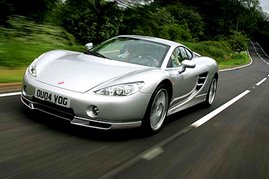
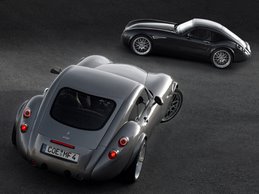
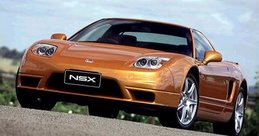
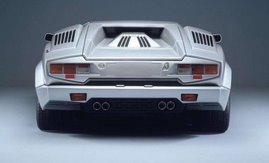

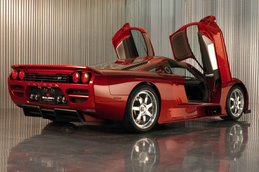
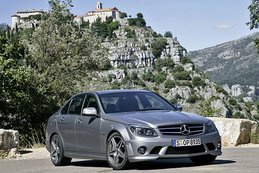
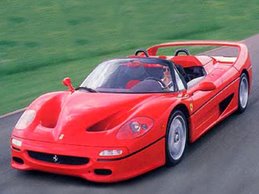

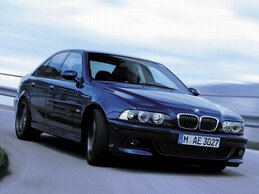



1 comment:
What's up friends, its impressive article about tutoringand entirely explained, keep it up all the time.
my web blog ... Email Console
Post a Comment